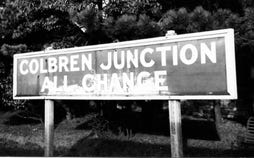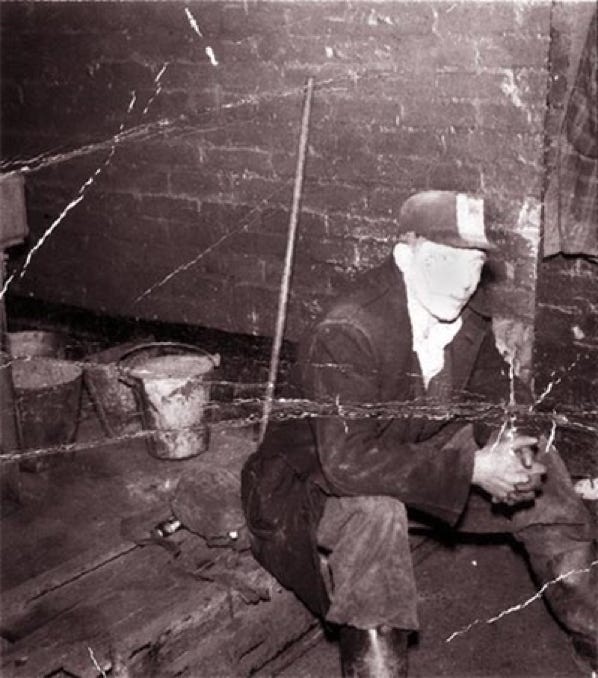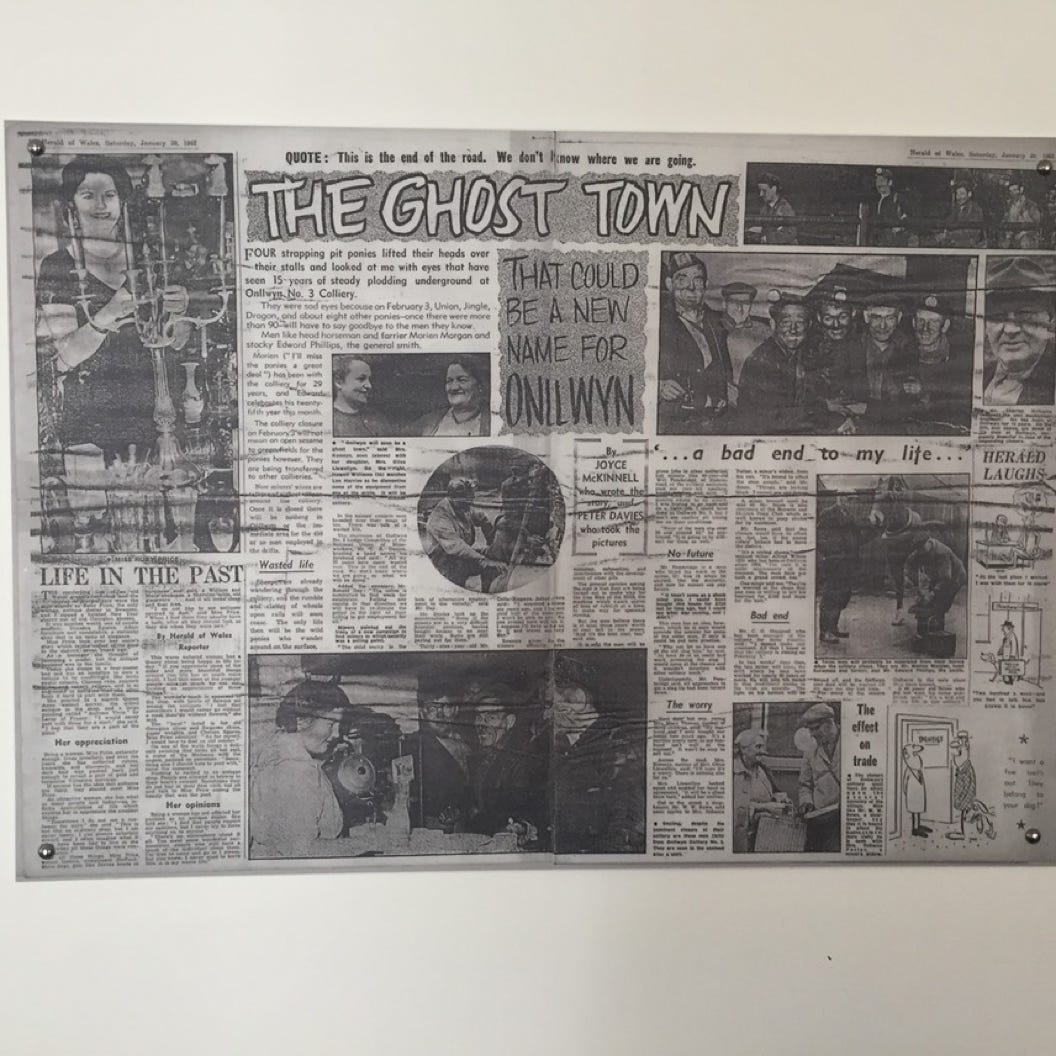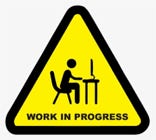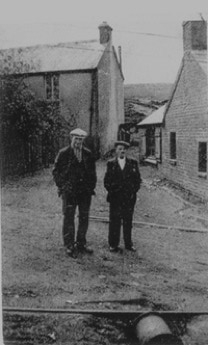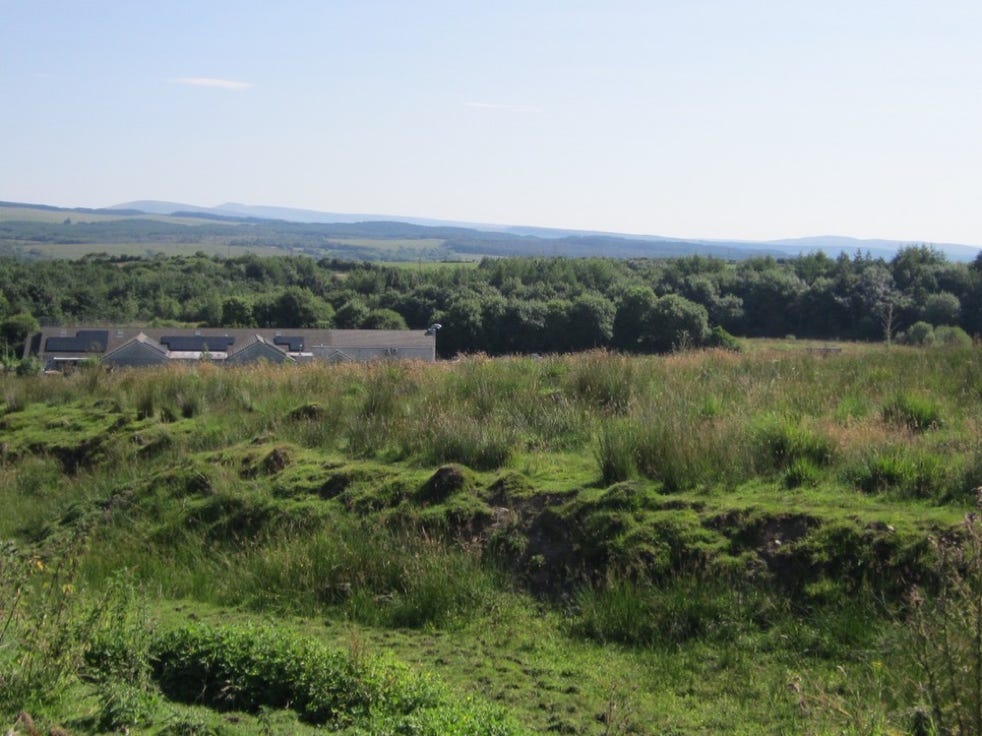The poem below was written by local man Joseph Emlyn Jones, probably sometime in the 1980s.
The prenationalisation collier boy
To David Martin Evans Bevan for employ.
The night before first shift to start at seven clothes to air
My mother putting working clothes draped over a wooden chair.
The alarm clock would be set for six
For breakfast bread and cheese in those days no Weetabix.
Donning my working clothes and working boots
The walk to work before the seven o’clock hooter hoots.
To arrive at the lamp room at seven o’clock
Before descending down the drift mine which had been driven through hard rock.
To pass the daylight turn and down the hard heading
Approaching the deputies check point for debriefing.
After the fireman checked my lamp proceed to place of work
Believe me this was no place for you to shirk.
I worked with father in the four feet seam of coal
In those days no boys were signing on the dole.
Passing the haulier with horse and empty dram
Arriving at face to bore coal holes for the shotsman to ram.
After the blast with heading full of smoke
Waiting a while for it to clear for fear we would choke.
Out with the shovels to fill the dram which was in short supply
To await the haulier to come by.
The haulier would stop by the tumbling place
To tumble the empty dram in to the empty space.
The hauler would hitch the horse to the full dram
Which had been raced not the race associated with Steve Cram.
It was done to maximise the weight in tonnage
At the end of the week would help with pay packet coinage.
Each dram would be hitched up in lots of fourteen
To be taken up the drift mine and down to the screen.
On arrival each dram would be weighed separately
Every collier had a special number exclusively.
I remember my father’s special number being 041
Each dram every day would start with number one.
In between drams we would notch and stand a pair of timber
It’s unusual in saying a pair of timber which was 3 in number.
Consisting of two arms and a collar
Notched with skill by myself and my father.
One nine foot collar across the heading with two six foot arms practically upright
Wedged with wooden lids, hammered in tight.
Another task was to bore topples in the rock above
For us my father and I to walk upright and give horses room to move.
In the incoming drams with timber, sleepers and a pair of rails to lay
Also in the drams was a big lump of clay.
The clay was used for the ramming of the bore holes
Everything unloaded everybody knew their roles.
Man, boy, haulier, horse each working as a team
Digging, shovelling, lifting, helping in the four foot seam.
In the stall we would work the coal from both sides of the road
Turning the coal back out for us to reload.
Packing the muck from the topholes to the gob
All this work just to earn a few bob.
In the four foot seam there was on top four inches of clod
Which wasn’t paid for by the overman’s measuring rod.
After about five and a half hours at the coal face
It’s time to make preparation to walk to the surface
But before we do it’s time to put our tools on the bar
Sometimes reasonably close and sometimes quite far.
On handing in the lamp at the lamp room at half past two
When the working part of the shift is through.
On exchanging lamp for lamp check
Hurrying home across the fields about a mile’s trek.
In the mines there was good comradeship and trust in all
Rallying round if one or two was buried in a fall.
Kneeling in front of the fire stripped to the waist
Hence the reason for being in haste.
First one home would get clean warm water
Which was provided by my mother who reared five sons and one daughter.
As we arrived home taking turns to bathe top halves
Feet, buttocks, legs, shins and calves.
The collier’s boy working hard and exciting
The role of my mother with others worth mentioning.
The highlight of the week on Friday was the pay packet joy
That is a brief insight into the prenational collier’s boy.
Joseph Emlyn Jones
